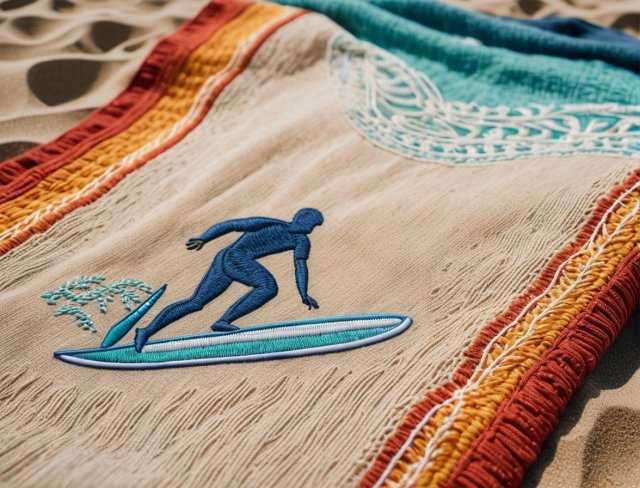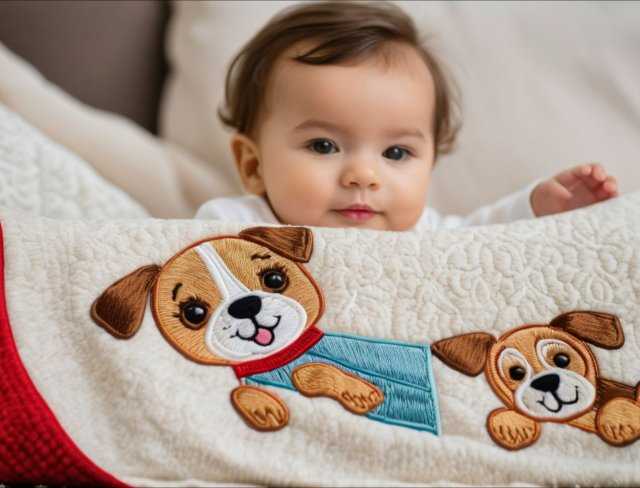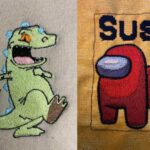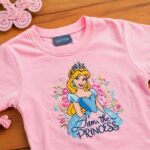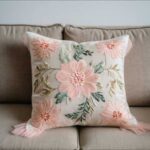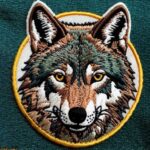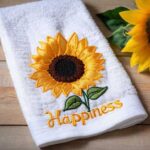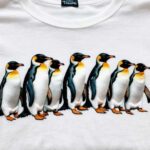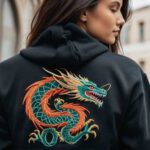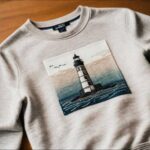Creative Coverups
An Introduction to Blanket Embroidery
Introduction
Blanket embroidery, a fusion of traditional craftsmanship and modern innovation, serves as a testament to human creativity and cultural heritage. From the intricate patterns adorning blankets to the precise techniques employed in machine embroidery, this art form captivates with its depth and versatility. As we delve into the world of blanket embroidery, we uncover a rich tapestry of techniques, materials, and cultural significance that span generations and continents.
The evolution of blanket embroidery reflects not only advancements in technology but also the enduring human desire to create beauty and meaning. Through machine embroidery techniques, artisans can achieve intricate designs with precision and efficiency, while honoring age old traditions. Exploring the various types and materials of blankets suitable for embroidery reveals the delicate balance between practicality and aesthetics, where every stitch tells a story.
In delving deeper into the cultural significance of embroidered blankets, we discover a profound connection to heritage, identity, and community. Whether used in ceremonies, passed down as heirlooms, or adapted into contemporary art, embroidered blankets remain a cherished expression of human creativity and craftsmanship.
The Popularity of Blanket Embroidery
In recent years, blanket embroidery has surged in popularity, thanks to advancements in technology and a growing appreciation for handmade craftsmanship. Once considered a niche art form, embroidery on blankets has now become a mainstream trend, embraced by enthusiasts and professionals alike. This surge in popularity can be attributed to several factors.
Firstly, the accessibility of machine embroidery has made the craft more approachable for beginners. With user friendly embroidery machines and digitized patterns readily available, aspiring embroiderers can now create intricate designs with relative ease. This accessibility has democratized the art form, allowing more people to explore their creativity and express themselves through embroidery.
Additionally, the rise of personalized and customizable products has fueled the demand for embroidered blankets. Whether it’s a monogrammed baby blanket or a custom designed throw for the home, embroidered blankets add a personal touch to any space. They make meaningful gifts for special occasions such as weddings, baby showers, and housewarmings, further driving the popularity of the craft.
Furthermore, the versatility of blanket embroidery has contributed to its widespread appeal. From delicate floral motifs to bold geometric patterns, there is a wide range of design options to suit every taste and style. Blanket embroidery can be used to enhance the beauty of everyday items, such as blankets, pillows, and even clothing, adding a touch of elegance and sophistication to any ensemble.
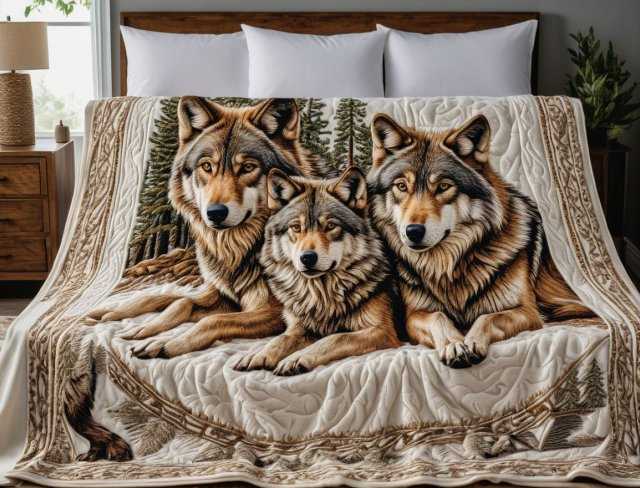
Overall, the popularity of blanket embroidery can be attributed to its accessibility, personalization, and versatility. As more people discover the joy of creating and gifting embroidered blankets, this timeless art form continues to thrive in the modern world.
Choosing Patterns and Motifs
The diverse patterns and motifs found in blanket embroidery span traditional cultural designs to contemporary abstract expressions, each narrating its unique story. From cultural symbols to modern artistic sensibilities, these designs reflect the rich tapestry of human creativity and heritage. Traditional patterns draw inspiration from folklore and mythology, while contemporary styles embrace eclectic influences, resulting in visually striking and conceptually engaging blankets.
Machine embroidery plays a crucial role in replicating these intricate designs with unparalleled precision. By utilizing advanced technology, artisans can recreate even the most complex patterns with remarkable accuracy, allowing for greater creative freedom and innovation. Whether rooted in tradition or exploring new artistic frontiers, blanket embroidery serves as a timeless expression of human craftsmanship and creativity, where each stitch weaves together threads of culture, history, and personal expression.
- Floral and Nature Motifs: These designs bring the beauty of nature into the home, with detailed flowers, leaves, and landscapes.
- Geometric Patterns: Modern and sleek, these patterns add a contemporary touch to blankets.
- Cultural and Ethnic Designs: These motifs preserve and celebrate heritage, showcasing traditional patterns from various cultures.
- Custom Creations: Personalized designs and monograms make for unique, one of a kind pieces.
- Animal Designs: Embroidered animals, such as birds, butterflies, and pets, add whimsy and charm to blankets, especially in children’s rooms or nature themed decor.
- Holiday and Seasonal Themes: Designs featuring holiday symbols like snowflakes, Christmas trees, hearts, or Easter eggs are popular for seasonal blankets and festive home decor.
- Nautical and Coastal Motifs: Sea inspired designs, such as anchors, seashells, and marine creatures, evoke a coastal ambiance, perfect for beach house interiors or nautical themed rooms.
- Vintage and Retro Patterns: Retro floral prints, art deco motifs, or vintage inspired patterns add a nostalgic touch to blankets, appealing to those who appreciate retro aesthetics
- Tribal and Bohemian Prints: Ethnic inspired designs, including tribal patterns, bohemian motifs, and intricate mandalas, create a global and eclectic vibe, suitable for eclectic or boho chic interiors.
- Literary and Pop Culture References: Designs inspired by literature, movies, or pop culture icons add a playful and personalized touch to blankets, reflecting the interests and passions of the owner.
- Abstract and Artistic Patterns: Abstract shapes, geometric compositions, and artistic interpretations offer a modern and avant garde aesthetic, appealing to those with contemporary tastes.
The intricate patterns adorning embroidered blankets transcend mere decoration, embodying profound meanings and narratives that elevate each piece to the status of a unique work of art. Rooted in cultural traditions and personal histories, these patterns serve as visual narratives, conveying stories of heritage, identity, and experience. From traditional motifs steeped in symbolism to contemporary designs that reflect modern sensibilities, each stitch is imbued with intention and significance.
These blankets become more than just functional items; they are tangible expressions of cultural identity and individual creativity, enriching both the maker and the beholder with their depth and beauty. Through the language of embroidery, generations communicate their values, aspirations, and collective memories, ensuring that each embroidered blanket becomes a cherished heirloom, cherished for its aesthetic appeal and its ability to connect past, present, and future.
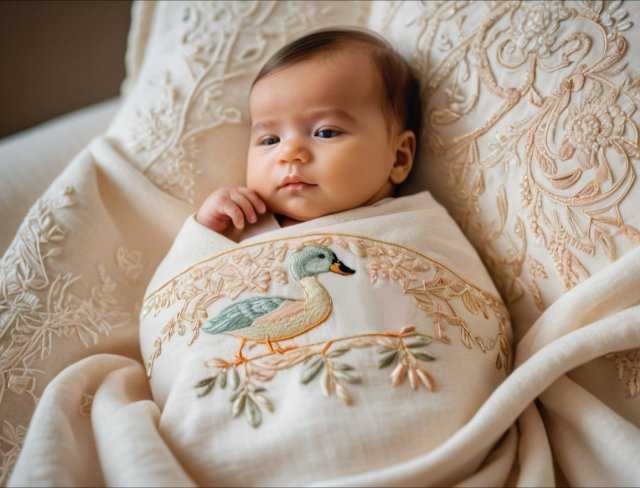
Suitable Types of Blankets Suitable
Selecting the right type of blanket is crucial for achieving the best embroidery results. Different fabrics interact with embroidery threads and machines in unique ways, influencing the final appearance of the design. Here, we delve into the various types of blankets that are particularly suitable for embroidery, discussing their characteristics and the considerations for each type.
• Fleece Blankets
Fleece blankets are a popular choice for embroidery due to their softness and warmth. They provide a smooth surface that allows for clean, detailed embroidery designs. The fleece material is relatively easy to work with, offering little resistance to the embroidery needle and threads. Additionally, fleece blankets are durable and can withstand frequent washing, making them ideal for everyday use. When embroidering on fleece, it is important to use a stabilizer to prevent the fabric from stretching and to ensure the stitches remain even and precise.
• Wool Blankets
Wool blankets are known for their durability and natural warmth, making them a classic and luxurious option for embroidery. The texture and weight of wool provide a rich, tactile backdrop for intricate designs. However, wool requires careful handling during the embroidery process. The fabric’s thickness and density can pose challenges, so using a sharp, sturdy needle is essential. Additionally, stabilizers help maintain the integrity of the design and prevent puckering. Wool blankets are often chosen for their timeless appeal and the elegance they add to embroidered pieces.
• Cotton Blankets
Cotton blankets are highly versatile and lightweight, making them an excellent choice for detailed embroidery designs. The smooth, even weave of cotton fabric allows for precise and clean stitches. Cotton is also easy to work with and widely available in various styles and weights. This type of blanket is perfect for creating intricate patterns, monograms, and personalized designs. Cotton blankets are breathable and comfortable, making them suitable for all seasons. When embroidering on cotton, it is important to pre wash the fabric to prevent shrinkage and to use a stabilizer to maintain stitch quality.
• Quilted Blankets
Quilted blankets offer a unique texture and depth, making them a distinctive choice for embroidery. These blankets feature multiple layers, typically including a top fabric, batting, and backing, which provide a plush and cushioned surface for embroidery. The quilted layers require the use of stabilizers to ensure the embroidery stitches are even and do not distort the quilt’s structure. Quilted blankets often come in a variety of designs and colors, providing a beautiful canvas for creative and artistic embroidery. They are particularly popular for creating heirloom quality pieces that can be cherished for generations.
• Minky Blankets
Minky blankets are known for their plush, velvety texture, adding a luxurious feel to any embroidered design. The softness and stretchiness of minky fabric make it a favorite for baby blankets and comfort items. However, the stretchiness also poses challenges during the embroidery process. Careful hooping and the use of stabilizers are essential to prevent the fabric from shifting and to ensure crisp, clean stitches. Minky blankets are ideal for simple, bold designs that highlight the fabric’s luxurious texture without overwhelming it.
Each type of blanket offers unique characteristics that can enhance the beauty and functionality of embroidered designs. Understanding the properties of different blanket fabrics and using appropriate techniques and materials ensures successful and stunning embroidery projects.
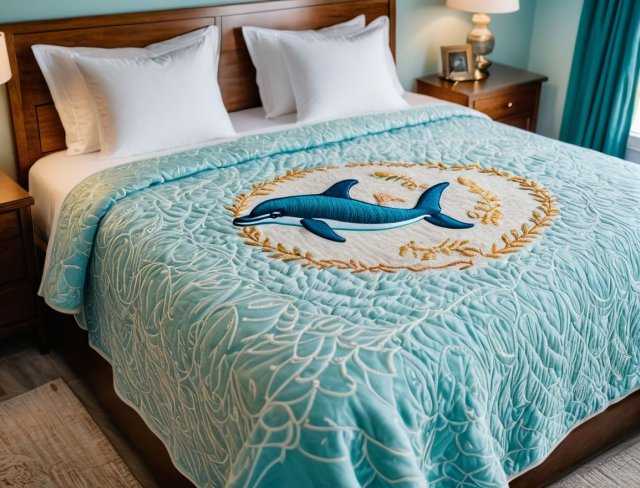
Blanket Sizes and Considerations
Blankets come in various sizes, each serving different purposes and requiring specific considerations for embroidery. The size of the blanket influences the choice of design, materials, and techniques used. Here, we elaborate on the different sizes of blankets and the considerations for embroidering each type.
• Baby Blankets
Baby blankets are small, often square or rectangular, designed specifically for infants. These blankets typically measure around 30 inches by 40 inches, making them perfect for swaddling newborns or providing a soft surface for playtime. When embroidering baby blankets, it is essential to use soft, hypoallergenic materials that are gentle on a baby’s sensitive skin. Popular designs include personalized monograms, cute animal motifs, and simple patterns that add a charming touch without overwhelming the small canvas. Due to the blanket’s frequent washing, durable threads and secure stitching techniques are crucial to ensure the embroidery withstands regular use and cleaning.
• Child’s Blankets
Slightly larger than baby blankets, child’s blankets are used for toddlers and young children. These blankets generally measure around 40 inches by 60 inches and often feature playful and colorful designs. When embroidering child’s blankets, it is important to choose designs that appeal to a child’s interests, such as cartoon characters, fairy tale themes, or vibrant patterns. The embroidery should be durable enough to endure frequent washing and rough use, as children tend to be less careful with their belongings. Additionally, using high quality, colorfast threads will prevent the designs from fading over time.
• Crib Blankets
Crib blankets are specifically designed for use in a baby’s crib. These blankets typically measure around 36 inches by 54 inches, fitting perfectly within the confines of a standard crib. When embroidering crib blankets, safety is a top priority. Designs should be kept simple and avoid any loose threads or embellishments that could pose a choking hazard. Soft, breathable fabrics are ideal, and hypoallergenic materials ensure comfort and safety for the baby. Personalized designs, such as the baby’s name or birth date, are popular choices that add a special touch.
• Swaddle Blankets
Swaddle blankets are designed for wrapping newborns snugly to provide comfort and security. These blankets are usually lightweight and measure around 40 inches by 40 inches or slightly larger. Embroidering swaddle blankets requires careful consideration of the fabric’s stretch and texture. Soft, breathable materials like cotton or muslin are ideal. Simple, minimalistic embroidery designs work best, as the fabric will be wrapped tightly around the baby, potentially distorting more intricate patterns.
• Travel Blankets
Travel blankets are smaller, portable blankets often used for on the go comfort. They typically measure around 40 inches by 60 inches. Travel blankets are convenient for car rides, airplane trips, or picnics. When embroidering travel blankets, choose designs that reflect the user’s personality or interests. Sturdy, easy to clean fabrics are preferred to withstand the wear and tear of frequent use. Compact, foldable designs ensure that the blanket remains practical for travel purposes.
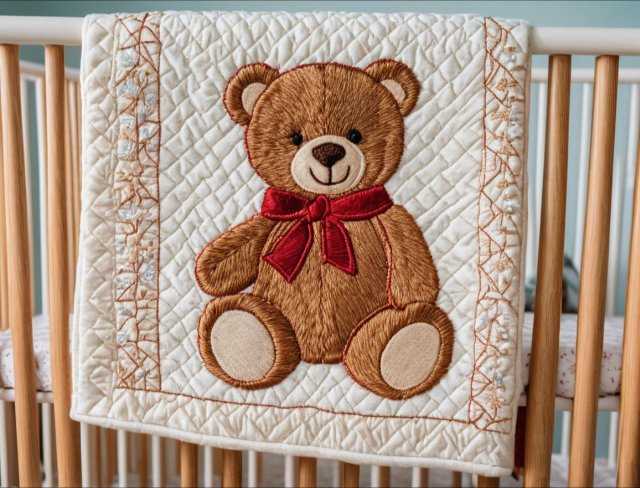
• Afghan Blankets
Afghan blankets, often handmade and crocheted or knitted, are larger blankets typically used for warmth and decoration. They measure around 50 inches by 65 inches. When adding embroidery to Afghan blankets, it’s essential to consider the texture and pattern of the crochet or knit. Embroidery can be used to highlight specific areas or add monograms and decorative accents. Using contrasting thread colors can enhance the visual appeal of the embroidery against the intricate patterns of the Afghan.
• Throws and Lap Blankets
Throws and lap blankets are typically smaller than standard adult blankets, often measuring around 50 inches by 60 inches. These blankets are used for added warmth and as decorative pieces in living spaces. Embroidered designs on throws and lap blankets often reflect the room’s décor and personal style. Popular choices include seasonal motifs, geometric patterns, and nature inspired designs. Because throws and lap blankets are often displayed in living rooms or draped over furniture, the embroidery should enhance their decorative appeal. Consider using luxurious threads and adding embellishments such as beads or sequins for an extra touch of elegance.
• Tapestry Blankets
Tapestry blankets are decorative pieces often used as wall hangings or throws. These blankets measure around 54 inches by 72 inches and are known for their detailed, woven designs. When embroidering tapestry blankets, the goal is to complement the existing design with additional decorative elements. Embroidery can enhance the texture and richness of the tapestry, adding depth and visual interest. Choose high quality threads that match the luxurious feel of the tapestry fabric.
• Adult Blankets
Adult blankets are full sized blankets used by adults for warmth and decoration. They typically range from 60 inches by 80 inches to even larger sizes, such as king size blankets. Embroidery on adult blankets can vary from elegant monograms to intricate, detailed patterns. When choosing designs, consider the blanket’s use and placement, such as a bedspread or a decorative throw. For example, a bedspread might feature a large central design, while a throw might have decorative borders or corner motifs. The larger canvas allows for more elaborate designs, but also requires careful planning to ensure the embroidery complements the overall aesthetic of the blanket and the room.
• Queen and King Size Blankets
Queen and king size blankets are the largest standard blanket sizes, used primarily for bed coverings. Queen size blankets measure around 90 inches by 90 inches, while king size blankets can be as large as 108 inches by 90 inches. Embroidering these large blankets requires careful planning and design scaling. Larger motifs, intricate borders, or repeating patterns work well to cover the expansive surface area. High quality, durable fabrics and threads are essential to ensure the embroidery stands up to regular use and washing. These blankets often serve as focal points in bedroom decor, so the designs should complement the room’s aesthetic.
Each blanket size presents unique opportunities and challenges for embroidery, and remember that there are more blanket sizes than what are listed here. By understanding the specific needs and uses of different blanket sizes, you can choose appropriate designs, materials, and techniques to create beautiful and functional embroidered blankets. Whether you are making a personalized baby blanket, a playful child’s blanket, an elegant adult blanket, or a decorative throw, careful planning and attention to detail will ensure that your embroidered creations are both stunning and durable.
What Materials Are Needed
Choosing the right materials for machine embroidery is crucial for achieving professional and aesthetically pleasing results. The materials you select can significantly affect the embroidery process and the final appearance of the embroidered design. Here, we explore in detail the various materials used in machine embroidery and their importance.
Embroidery Threads
Embroidery threads come in a variety of materials, each offering distinct qualities that affect the durability, sheen, and texture of the embroidery.
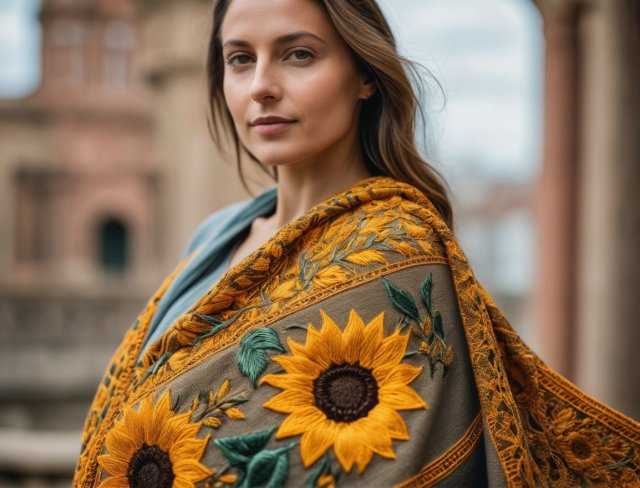
- Rayon Thread: Rayon is a popular choice for machine embroidery due to its high sheen, which gives a lustrous finish to the designs. Rayon threads are smooth, flexible, and come in a wide range of vibrant colors. However, they are less durable compared to other threads and may not be the best choice for items that require frequent washing or heavy use.
- Polyester Thread: Polyester threads are known for their strength and resistance to fading and shrinking. They are durable, making them ideal for items that will be washed frequently, such as blankets and clothing. While polyester threads have a slightly lower sheen compared to rayon, they are available in many colors and provide a reliable option for a wide range of projects.
- Cotton Thread: Cotton threads are soft and offer a matte finish, providing a natural look to embroidery. They are particularly suitable for heirloom and vintage style embroidery. Cotton threads are strong and absorb dyes well, ensuring rich, lasting colors. However, they may not have the same sheen as rayon or polyester and can be more prone to breakage during high speed machine embroidery.
- Metallic Thread: Metallic threads add sparkle and shine to embroidery designs, making them perfect for decorative accents and special projects. These threads are made by wrapping a core thread with a metallic film, resulting in a reflective surface. Metallic threads can be more challenging to work with due to their tendency to break or fray, so using a special needle designed for metallic threads is recommended.
Stabilizers
Stabilizers are essential in machine embroidery to support the fabric and prevent it from puckering or distorting during the stitching process. There are several types of stabilizers, each suited for different fabrics and embroidery designs.
- Tear Away Stabilizer: Tear away stabilizers are used for stable, non stretchy fabrics. They provide temporary support and can be easily torn away after the embroidery is completed. This type of stabilizer is ideal for simple designs and is quick and easy to remove.
- Cut Away Stabilizer: Cut away stabilizers offer permanent support and are used for stretchy or delicate fabrics. They remain on the fabric after the excess is cut away, providing long lasting stability. Cut away stabilizers are ideal for detailed and dense embroidery designs, ensuring that the stitches remain in place even after multiple washes.
- Wash Away Stabilizer: Wash away stabilizers dissolve in water, making them perfect for delicate fabrics and designs where no stabilizer remnants are desired. They are commonly used for lace and freestanding embroidery. Wash away stabilizers are also used as a topping on high pile fabrics like towels to prevent the stitches from sinking into the fabric.
Hoops and Frames
Hoops and frames are used to hold the fabric taut during the embroidery process, ensuring precise and consistent stitching.
- Embroidery Hoops: Traditional embroidery hoops are circular frames that keep the fabric stretched and stable. They come in various sizes and are suitable for most machine embroidery projects. Hoops provide even tension across the fabric, preventing puckering and ensuring clean stitches.
- Magnetic Hoops: Magnetic hoops use magnets to hold the fabric in place, making them easier to use with delicate or bulky fabrics that might be damaged by traditional hoops. They allow for quick and easy re hooping, which is especially useful for larger designs or multiple hoopings.
- Clamping Frames: Clamping frames hold the fabric with clamps rather than tension, making them suitable for thick or heavy fabrics. They provide a secure hold and are ideal for items like quilts or heavy blankets that require strong support during embroidery.
Needles
Choosing the right needle is crucial for the success of machine embroidery. The needle must be compatible with the thread and fabric being used.
- Universal Needles: Universal needles are versatile and suitable for a wide range of fabrics. They have a slightly rounded point that can handle both woven and knit fabrics, making them a good all purpose choice for machine embroidery.
- Embroidery Needles: These needles are specifically designed for machine embroidery and have a larger eye to accommodate embroidery threads. They also have a smooth, rounded point that reduces the risk of damaging the fabric and thread.
- Ballpoint Needles: Ballpoint needles are designed for knit fabrics. Their rounded tip slides between the fibers of the fabric rather than piercing them, reducing the risk of fabric damage and ensuring smooth, even stitches.
- Sharp Needles: Sharp needles have a fine, pointed tip that is ideal for tightly woven fabrics. They provide precise, clean stitches and are commonly used for detailed and intricate embroidery designs.
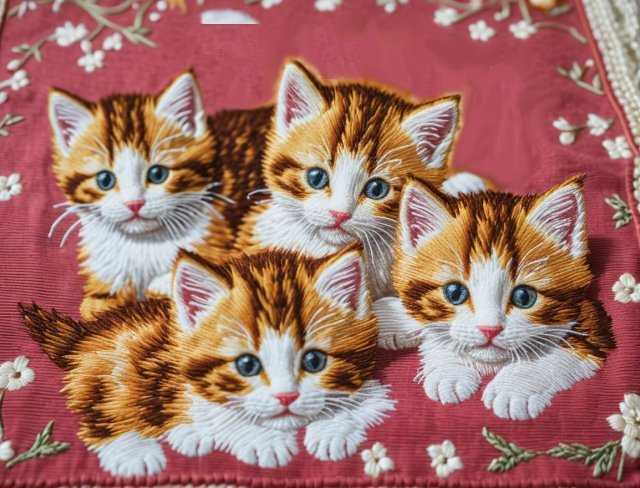
Blanket Fabric Choices
The choice of fabric is crucial as it affects the overall appearance and quality of the embroidery. Different fabrics require different handling and stabilization techniques.
- Cotton Fabric: Cotton is a popular choice for its smooth surface and ease of use. It is versatile and works well with most embroidery designs. Cotton fabric should be pre washed to avoid shrinkage and to ensure the embroidery stays intact.
- Linen Fabric: Linen offers a classic, natural look with a slightly textured surface. It is strong and durable, making it suitable for a variety of embroidery projects. Linen fabric should also be pre washed and ironed before embroidery to remove any wrinkles.
- Silk Fabric: Silk provides a luxurious, smooth surface that enhances the sheen of embroidery threads. It is delicate and requires careful handling. Using a lightweight stabilizer is essential to support the fabric without adding bulk.
- Polyester Fabric: Polyester fabrics are durable and resistant to wrinkles and shrinking. They are often used for items that require frequent washing. Polyester fabrics work well with polyester threads, providing a strong and cohesive finish.
- Fleece and Minky Fabric: These soft, plush fabrics are popular for blankets and baby items. They require special consideration to avoid distortion during embroidery. Using a stabilizer and a sharp needle is essential to maintain the integrity of the fabric and the design.
By carefully selecting the appropriate materials for each project, you can ensure that your machine embroidery designs are not only beautiful but also durable and long lasting. Understanding the properties and best uses of different threads, stabilizers, hoops, needles, and fabrics allows you to make informed decisions and achieve professional quality embroidery results.
Exposing The Cultural Significance
Embroidered blankets hold profound cultural significance across various societies, serving as more than just functional items but as artifacts that embody rich traditions, heritage, and personal expression. The intricate designs and motifs often tell stories, convey social status, and celebrate important life events, making these blankets treasured keepsakes and symbols of cultural identity.
In many cultures, embroidered blankets are integral to ceremonies and rituals, marking significant milestones such as births, weddings, and rites of passage. For instance, in some Indigenous communities in North America, blankets adorned with elaborate embroidery are gifted during important life events. These blankets are not merely decorative but are imbued with deep meanings and spiritual significance. They often feature symbols that represent the recipient’s lineage, tribal affiliations, or significant achievements, thus acting as tangible links to the community’s heritage and values.
In Eastern Europe, particularly in countries like Hungary and Ukraine, embroidered blankets are a testament to the region’s rich folk art traditions. The vibrant colors and detailed patterns, often passed down through generations, reflect the cultural history and artistic sensibilities of the people. These blankets are used in various festivities and are considered family heirlooms, preserving the craftsmanship and artistic expressions of ancestors. The motifs commonly found in these embroideries, such as flowers, birds, and geometric patterns, are laden with symbolism and reflect themes of nature, fertility, and protection.
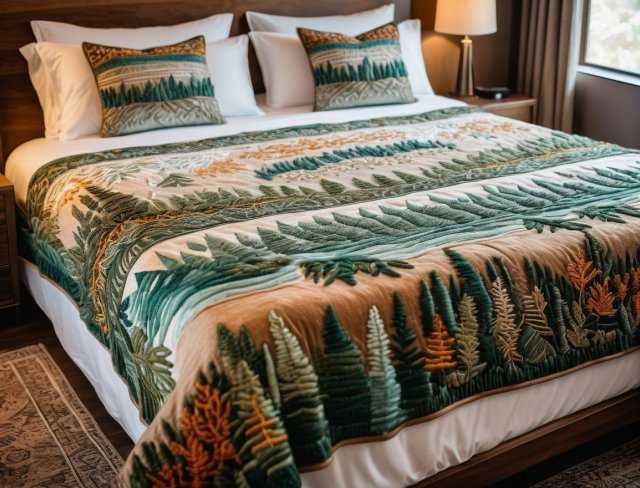
In Asian cultures, especially in China and India, embroidered textiles, including blankets, play a crucial role in both daily life and ceremonial practices. In China, the art of embroidery, known as “xiuhua,” has a history spanning over two millennia. Embroidered blankets often feature auspicious symbols such as dragons, phoenixes, and lotuses, which are believed to bring good luck, prosperity, and harmony.
Similarly, in India, embroidered blankets, like those from the state of Gujarat, showcase intricate mirror work and vibrant threads, reflecting the region’s cultural diversity and artistic heritage. These blankets are not only functional items but also display pieces that highlight the skilled craftsmanship and cultural narratives of their makers.
Embroidered blankets also serve as a means of preserving and transmitting cultural knowledge and traditions. In many African cultures, the patterns and techniques used in embroidery are taught to younger generations as part of their cultural education. This practice ensures the continuity of traditional skills and the perpetuation of cultural identity. The blankets often depict scenes from daily life, historical events, or mythological tales, making them rich repositories of communal memory and wisdom.
Moreover, embroidered blankets have found a place in contemporary art and fashion, where traditional techniques are reinterpreted to create modern pieces that honor cultural heritage while appealing to current aesthetic sensibilities. Designers and artists around the world draw inspiration from traditional embroidered blankets, incorporating their motifs and techniques into contemporary designs. This fusion not only celebrates the beauty and complexity of traditional embroidery but also ensures its relevance in a globalized world.
Embroidered blankets are far more than utilitarian items; they are cultural artifacts that carry immense symbolic weight. They encapsulate the artistic expressions, social values, and historical narratives of the communities that create them. Through their intricate designs and meaningful motifs, embroidered blankets connect generations, celebrate cultural identity, and preserve the rich tapestry of human heritage.
Conclusion
Blanket embroidery, particularly through machine embroidery techniques, beautifully combines tradition with modern technology. This craft involves intricate patterns and motifs, diverse materials, and precise tools, each contributing to its richness. Machine embroidery offers unparalleled precision and efficiency, enhancing the craft without losing its essence: creating beautiful, meaningful pieces.
The variety of blanket sizes, from baby to adult, presents unique opportunities and challenges. Choosing the right materials, such as threads, stabilizers, hoops, and needles, is crucial for achieving professional and durable results. Each blanket type requires specific considerations to ensure the embroidery enhances both its aesthetic and functional qualities.
The cultural significance of embroidered blankets is profound. Across various societies, they serve as more than just functional items; they are cultural artifacts that embody heritage, traditions, and personal stories. Used in ceremonies, passed down as heirlooms, or adapted into contemporary art and fashion, embroidered blankets hold a special place in human history and expression.
Embracing both the technical and cultural aspects of blanket embroidery allows for a deeper appreciation of its complexity and artistry. Whether creating personalized gifts, heirloom pieces, or artistic expressions, blanket embroidery continues to celebrate the intricate beauty and rich heritage of textiles.
Now that you have read through this article, feel free to SHOP for products we have created. If you are looking for something special which isn’t in our store, feel free to contact us.

